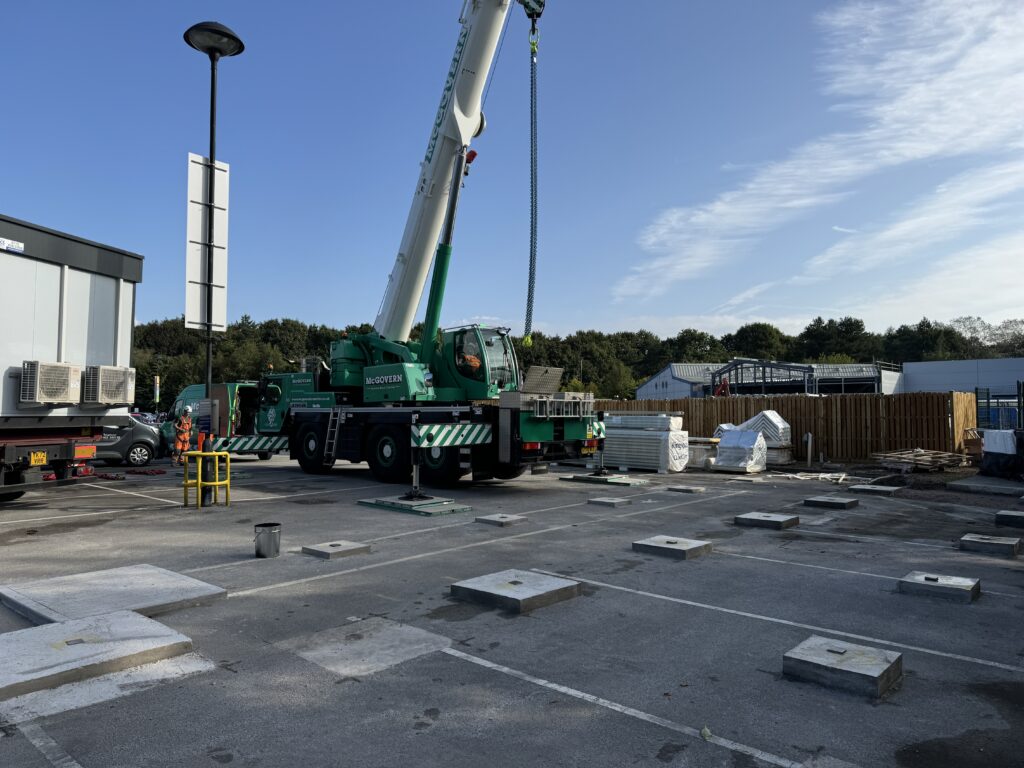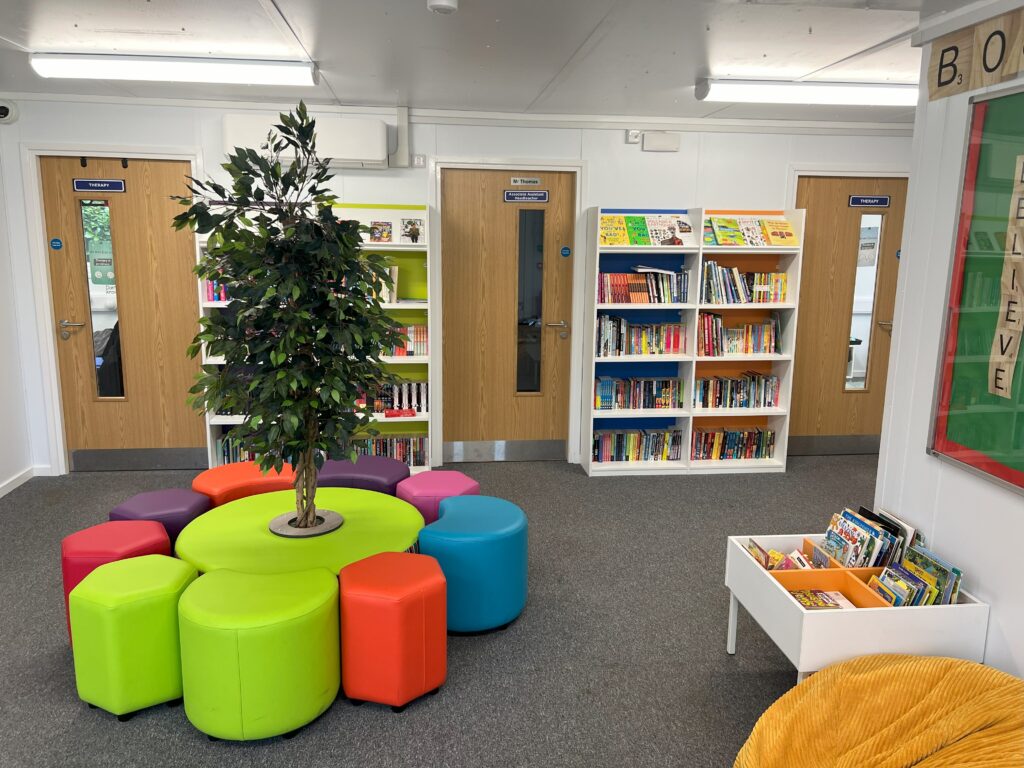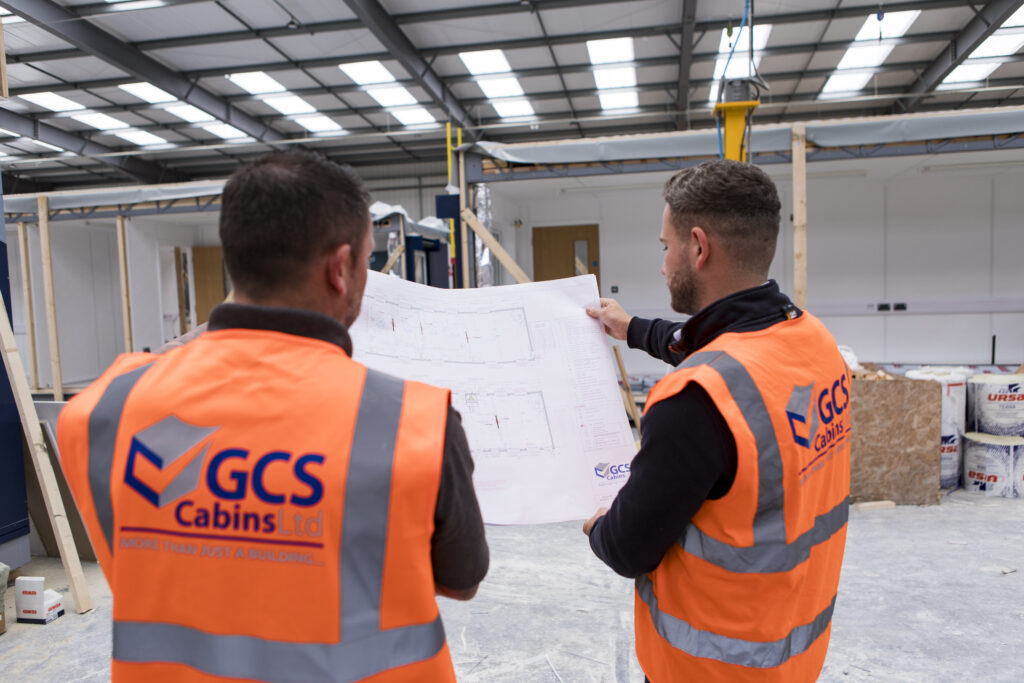Modular classrooms are helping the education sector with the increasing pressure to address environmental sustainability and budget constraints. With growing student populations and ageing infrastructure, schools, academies and local authorities are tasked with expanding their facilities to support their sustainability goals. Modular construction is an innovative solution that not only meets the demands of modern education but also reduces carbon footprints. This article explores how modular classrooms and modular school buildings provide a sustainable, cost-effective answer to these challenges.
Modular Classrooms with Sustainability at Their Core
Reducing Construction Waste
Traditional construction methods are notorious for generating significant amounts of waste. From surplus materials to on-site inefficiencies, this waste often ends up in landfills, contributing to environmental damage. Modular construction, by contrast, is a leaner, greener alternative. Modular buildings are constructed off-site in controlled factory environments, where materials can be precisely measured and managed. This minimises waste and ensures that any excess materials can be reused or recycled efficiently.
For schools, this means less disruption during the building process and a tangible commitment to sustainability. Reduced waste benefits the planet and aligns with eco-conscious values that many schools and local authorities strive to maintain.
Lowering Energy Consumption During Construction
The off-site nature of modular construction significantly reduces energy consumption compared to traditional builds. Factory-based construction processes are optimised for energy efficiency, with advanced machinery and technology streamlining production. Additionally, the need for heavy machinery and prolonged construction activity at the school is drastically reduced because modular classrooms are pre-fabricated and then assembled on-site.
This approach not only minimises the environmental impact but also lowers energy-related costs during the construction phase. Schools can rest assured that their expansion projects contribute less to global carbon emissions.
Energy-Efficient Design
One of the primary features of modular school buildings is their energy-efficient design. Modular classrooms can have advanced insulation, energy-efficient windows, and eco-friendly HVAC systems to reduce heating and cooling demands. Many modular buildings are also designed to accommodate renewable energy systems, such as solar panels, which further reduce reliance on fossil fuels.
By adopting these energy-saving features, schools can lower their ongoing utility bills while providing a comfortable learning environment for students and staff. Over time, these savings can be redirected into other vital areas, such as teaching resources or extracurricular programs.
Sustainable Building Materials
Modular construction prioritises the use of sustainable and recyclable materials. From responsibly sourced timber to recycled steel, the materials used in modular school buildings are chosen with the environment in mind. Many manufacturers also use non-toxic, low-VOC (volatile organic compound) materials to ensure healthier indoor air quality for students and staff.
This sustainable approach extends to the end of a modular building’s lifecycle. Unlike traditional buildings, modular classrooms can be disassembled, and their components can be repurposed or recycled, reducing waste and conserving resources. For schools committed to sustainability, this cradle-to-cradle approach represents a significant advantage.
Faster Construction, Less Disruption
The speed of modular construction is another key factor in its sustainability credentials. Traditional construction projects can take months or even years to complete, often leading to extended disruption and increased carbon emissions from prolonged on-site activity. Modular classrooms, on the other hand, can be completed in a matter of weeks.
Because most of the construction takes place off-site, the on-site assembly process is quick and efficient. This not only reduces the environmental impact of construction vehicles and equipment but also minimises disruption to the school’s daily operations. Students and staff can continue their routines with minimal interference, making modular school buildings a practical choice for time-sensitive projects.

Adaptability and Longevity
Modular buildings are designed with adaptability in mind, making them an excellent long-term investment for schools. As student populations fluctuate and educational needs evolve, modular classrooms can be easily expanded, reconfigured, or relocated. This flexibility reduces the need for new construction projects, lowering carbon emissions and material consumption.
Modern modular school buildings are built to last. High-quality materials and robust construction methods ensure that these buildings can withstand the demands of daily use in an educational setting. Their durability reduces the need for frequent repairs or replacements, further contributing to their sustainability and cost-effectiveness.
Lower Lifetime Costs
While modular construction is often more affordable upfront than traditional methods, its real financial benefits lie in long-term savings. Energy-efficient designs, durable materials, and reduced maintenance requirements all contribute to lower operational costs over the building’s lifecycle. These savings can be substantial for schools who need to look after their budgets.
Additionally, the shorter construction timelines associated with modular classrooms mean fewer labour costs. Schools can start using their new facilities sooner, maximising their return on investment.
Supporting Circular Economies
The modular construction industry is increasingly adopting circular economy principles. By designing buildings for disassembly and reuse, manufacturers are helping to create a more sustainable construction sector. Schools that opt for modular buildings are, in effect, supporting these forward-thinking practices.
Meeting Sustainability Standards
Modular school buildings are designed to meet stringent environmental standards, such as BREEAM (Building Research Establishment Environmental Assessment Method) certification. These standards assess factors like energy efficiency, waste management, and the use of sustainable materials.
By choosing modular construction, schools and local authorities can ensure compliance with these standards while demonstrating their commitment to environmental stewardship. This can enhance their reputation and appeal to eco-conscious parents and stakeholders.
Inspiring the Next Generation
Finally, choosing modular classrooms is not just about reducing carbon footprints today — it’s about inspiring the next generation to prioritise sustainability. Schools set a powerful example for their students by opting for environmentally friendly construction methods, promoting a culture of environmental responsibility.
Modular school buildings can also serve as teaching tools, showcasing innovative green technologies and sustainable practices. This hands-on learning opportunity can empower students to become future leaders in sustainability, creating a ripple effect that extends beyond the classroom.

Modular Classrooms that meet your Sustainability Goals
Sustainable modular construction is an excellent choice for the education sector. By reducing waste, lowering energy consumption, and utilising eco-friendly materials, modular classrooms and school buildings address the pressing need for greener infrastructure. GCS Cabins provides modular school buildings that are adaptable, cost-effective and can meet high sustainability standards.
For schools, investing in modular buildings is not just a practical solution to immediate needs; it is a forward-thinking commitment to a more sustainable future. By choosing modular construction and the GCS Group, educational institutions can reduce their carbon footprints and save money.
Contact us to see how modular school buildings are paving the way to a greener, brighter future.







